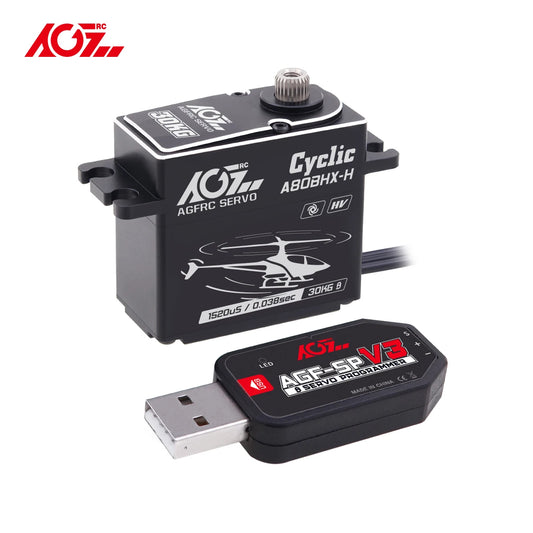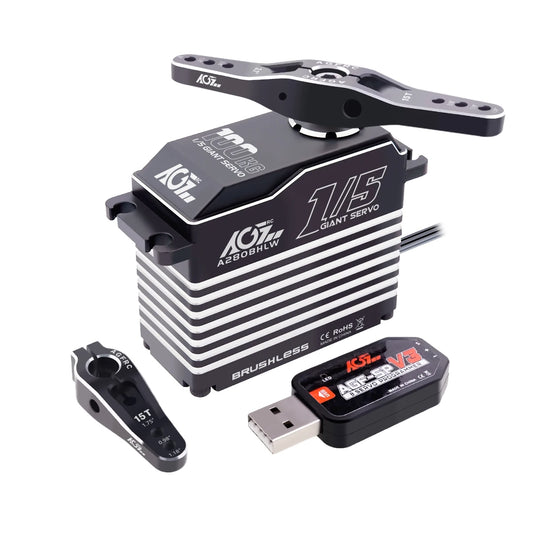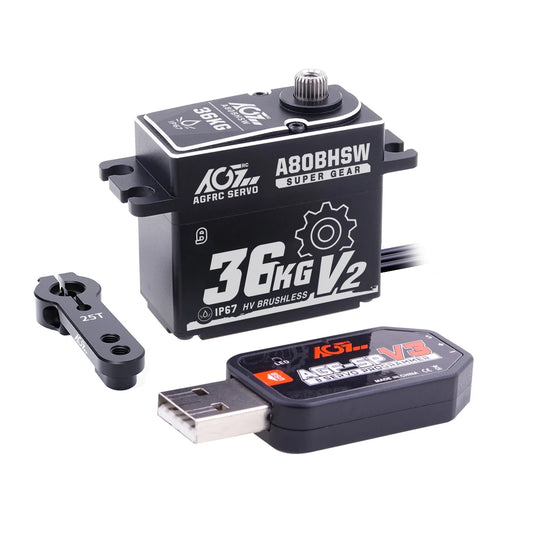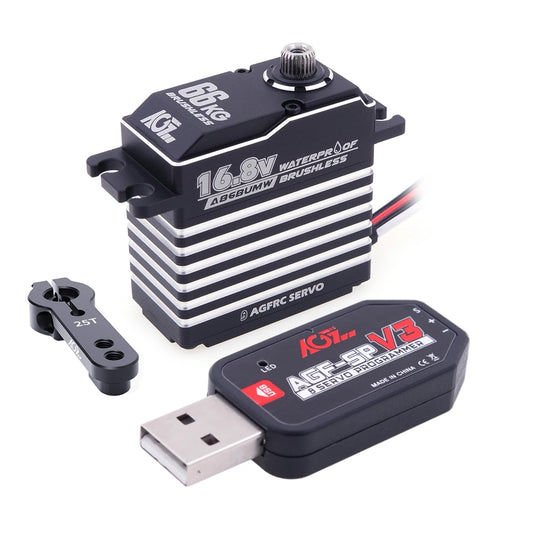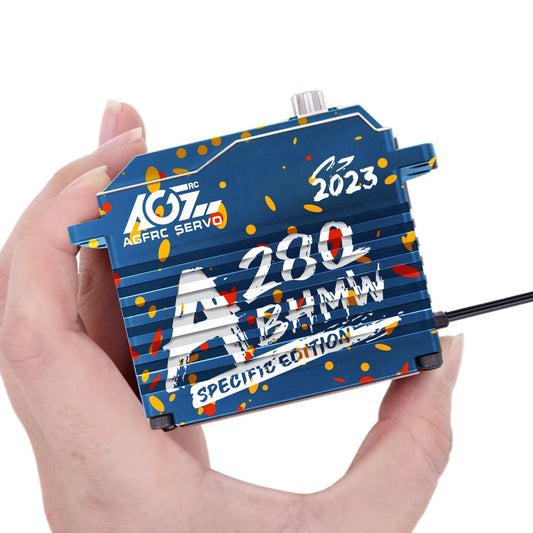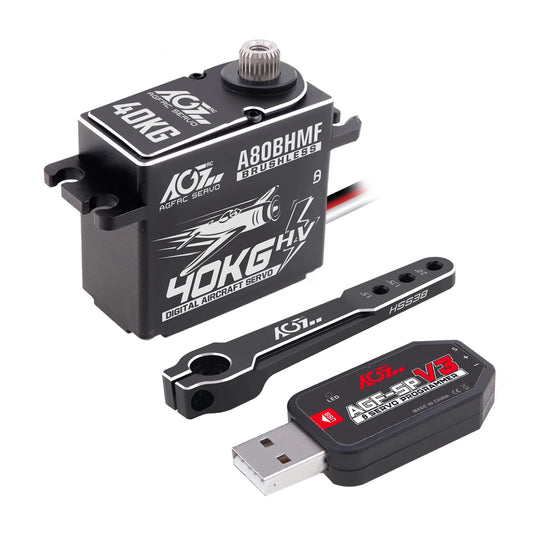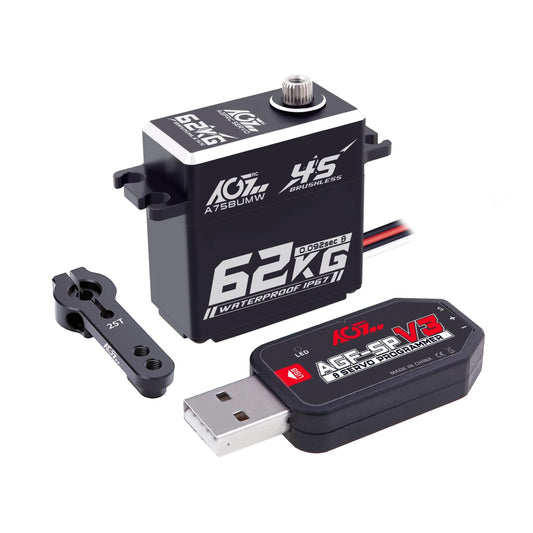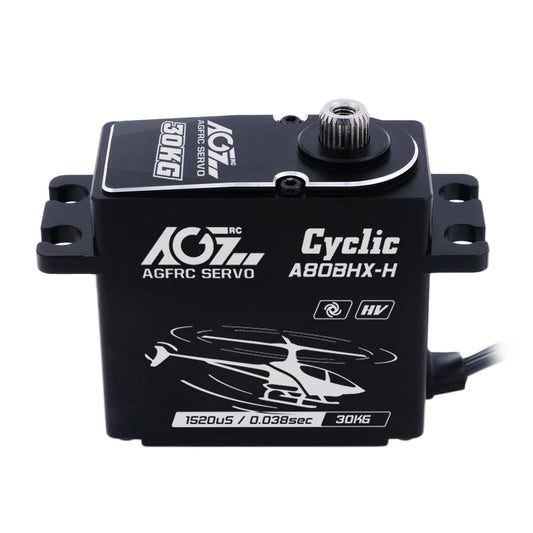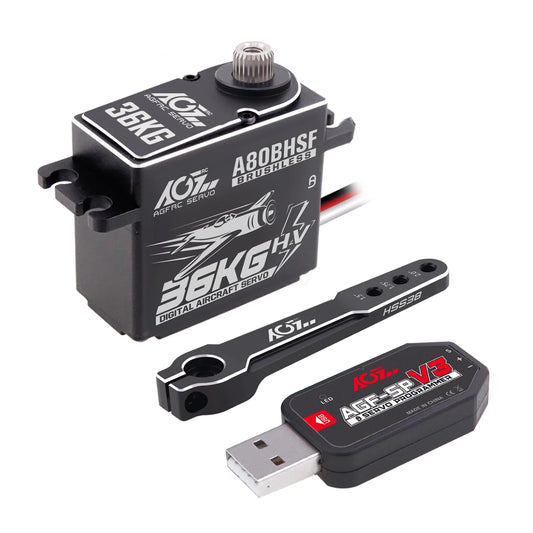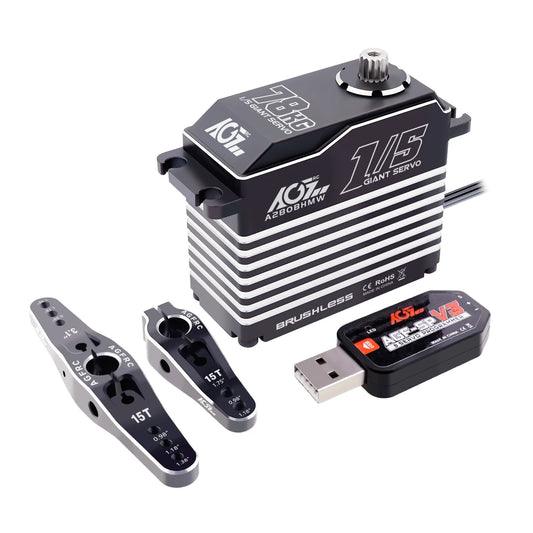-
FEETECH FT5425BL Servo Motor, 180° Brushless Digital, Steel Gears, 28.5kg·cm @8.4V, 0.08s/60° Speed, 4–12V
Regular price $98.00 USDRegular priceUnit price per -
FEETECH FT600B Servo Motor, 24V Brushless, 600kg.cm Torque, 180° PWM Control, Aluminum Case, Steel Gears
Regular price From $799.00 USDRegular priceUnit price per -
FEETECH FT860B Servo Motor, Brushless, Steel Gears, 180° Travel, 25T Spline, 6–9V, 70kg.cm Peak @8.4V
Regular price $143.00 USDRegular priceUnit price per -
FEETECH FT870B Servo Motor, 180° Brushless, Titanium Gears, 75kg.cm @8.4V / 70kg.cm @12V, 25T 5.9mm Spline
Regular price From $136.00 USDRegular priceUnit price per -
FEETECH FT1000 Servo Motor 24V Brushless, 1000kg.cm Stall, 180° PWM, FT-1000-C001, Steel Gears, Aluminum Case
Regular price From $1,508.00 USDRegular priceUnit price per -
FEETECH FT450B Servo Motor, 24V Brushless, 450kg.cm Peak Torque, 180° PWM Control, Aluminum Case, 25T Spline
Regular price $689.00 USDRegular priceUnit price per -
FEETECH FT750B Servo Motor, 24V Brushless, 750kg·cm Stall Torque, 180° Travel, Digital PWM Control, Aluminum Case
Regular price $999.00 USDRegular priceUnit price per -
FEETECH FT955BL Servo Motor, 8.4V Brushless, 50kg.cm Peak Torque, Steel Gears, Aluminum Case, 25T/5.9mm Spline
Regular price From $175.00 USDRegular priceUnit price per -
FEETECH STS3025BL Servo Motor, 12V Brushless Magnetic Encoder, TTL Double Shaft, 20/40kg.cm, 170RPM max
Regular price From $143.00 USDRegular priceUnit price per -
FLYSFY FXS380 i-BUS2 Waterproof Servo Motor, Brushless, 6V–8.4V, 29–38Kg·cm Torque, Metal Alloy Gears (PP67) for RC Crawler/Boat
Regular price $249.00 USDRegular priceUnit price per -
Futaba BLS-HC600 15.2kg 0.07s 760μs Brushless S.Bus2 Helicopter Servo (HV, 77g)
Regular price $199.99 USDRegular priceUnit price per -
Futaba HPS-HC700 20kg 0.075s High-Torque Brushless S.Bus2 Servo for RC Helicopters (BEC Ready)
Regular price $199.99 USDRegular priceUnit price per -
Futaba HPS-CT702 30kg Low-Profile S.Bus2 Brushless Servo for 1/10 RC Drift & Touring Cars (No BEC)
Regular price $269.99 USDRegular priceUnit price per -
Futaba BLS-A600 6.7kg 0.09s High-Speed Mini Brushless S.Bus2 Air Servo (HV, 28g)
Regular price $169.99 USDRegular priceUnit price per -
Futaba HPS-CT701 30kg Low-Profile High-Speed S.Bus2 Brushless Surface Servo for 1/10 RC Drift & On-Road Cars (No BEC)
Regular price $299.00 USDRegular priceUnit price per -
Futaba HPS-CB701 49kg High-Voltage S.Bus2 Brushless Surface Servo for 1/8 & 1/10 RC Cars (No BEC)
Regular price $259.99 USDRegular priceUnit price per -
Futaba BLS373SV S.Bus2 HV Brushless Surface Servo – 37kg Torque, Programmable for RC Cars
Regular price $229.99 USDRegular priceUnit price per -
Futaba HPS-CT501 No BEC S.Bus2 HV Brushless Surface Servo for 1/10 RC Drift & On-Road Cars – 21kg Torque
Regular price $219.99 USDRegular priceUnit price per -
Futaba HPS-CB500 No BEC S.Bus2 High Voltage Surface Servo 25.5kg Torque 0.06s Brushless
Regular price $199.99 USDRegular priceUnit price per -
Futaba BLS371SV S.Bus2 High Voltage Surface Servo 19kg Torque 0.10s Speed Brushless Programmable
Regular price $199.99 USDRegular priceUnit price per -
Futaba BLS-CM600 S.Bus2 High Voltage Mini Surface Servo Brushless for 1/12 On-Road Racing
Regular price $159.99 USDRegular priceUnit price per -
FUTABA HPS-H701 40KG High Torque HV S.BUS2 Brushless Servo
Regular price $275.00 USDRegular priceUnit price per -
OCSERVO OCS-D9501 950KG.CM @30V 1750g CNC Digital Brushless PWM CAN 485 High Torque Servo Steel Gear UAV Metal horn
Regular price From $60.94 USDRegular priceUnit price per -
OCSERVO OCS-D6501 650KG.CM @30V 896g CNC Digital Brushless PWM CAN 485 High Torque Servo Steel Gear UAV Metal horn
Regular price From $44.39 USDRegular priceUnit price per -
OCServo OCS-D2002 250KG.CM @30V 405g CNC Digital Brushless PWM CAN 485 High Torque Servo Steel Gear for UAV Drone
Regular price From $35.42 USDRegular priceUnit price per -
AGFRC A80BHX-H - 8.4V 30KG Programmable Helicopter Cyclic Servo High Torque High Voltage Brushless Digital Motor For RC Helicopter
Regular price From $12.90 USDRegular priceUnit price per -
AGFRC A280BHMW A280BHLW 78KG 100KG 5th Scale HV High Torque WP Brushless RC Racing Servo For 1/5 Large Aircraft Car Boat RC Mode
Regular price From $316.35 USDRegular priceUnit price per -
AGFRC B53BHP V2 - Brushless RC Servo HV 20KG Upgraded Steel Gear Programmable Digital Standard Servo for 1/10 RC Car Boat Crawler
Regular price From $79.09 USDRegular priceUnit price per -
AGFRC A80BHSW V2 - 36KG Waterproof High Torque Hi-Speed Brushless RC Steering Servo Motor For 1/10 Off Road RC Car Truck Airplane
Regular price From $112.12 USDRegular priceUnit price per -
AGFRC A86BUMW - Waterproof Metal Gear 4S Lipo 16.8V 66KG High Torque Brushless Digital Steering Servo for RC Crawler Cars Truggy
Regular price From $43.57 USDRegular priceUnit price per -
Anniversary Edition AGFRC A280BHMW - 78KG High Torque Waterproof Brushless For 1/5 Scale RC Racing Servo Large Aircraft Car Boat
Regular price From $312.62 USDRegular priceUnit price per -
AGFRC A80BHMF - 40kg Aircraft Servo Programmable Steel + Titanium Gear Digital Brushless Standard Servo For 30-200CC RC Airplane
Regular price From $105.16 USDRegular priceUnit price per -
AGFRC A75BUMW - 4S 16.8V 62KG Super Torque HV Programmable Waterproof Brushless RC Servo For 1/8 1/10 RC Car Crawler Buggy Truck
Regular price From $117.33 USDRegular priceUnit price per -
AGFRC A80BHX-H - 30KG 0.038Sec 25T Aluminum Case High Torque HV Brushless Cyclic Servo For 570-800 Class Helicopter Swash Plate
Regular price From $110.94 USDRegular priceUnit price per -
AGFRC Servo A80BHSF - 36KG HV Fast Speed High Torque Brushless Standard Programmable Aircraft Servo for 30-200CC RC Airplane
Regular price From $105.16 USDRegular priceUnit price per -
AGFRC A280BHMW - 1/5 Scale Giant Servo 78KG High Torque Steel Gears Programmable Digital Brushless RC Racing Servo For Crawler
Regular price From $349.93 USDRegular priceUnit price per

























